A quick look at Azure Content Moderator and how it can be used to review blog comments
This blog post introduces you to Azure Content Moderator and shows how to integrate it into the blog post commenting process as a text moderator. Azure Content Moderator gives recommendations during the process on whether comments should be reviewed or not. Review is recommended by Azure Content Moderator if the comment contains offensive words or detects profanity. The commenting system used in this example doesn't support automatic approval of the comments so instead an email notification with a review recommendation is generated.
What is Azure Content Moderator?
Let's cover first some details about Azure Content Moderator.
Azure Content Moderator is an AI service that lets you handle content that is potentially offensive, risky, or otherwise undesirable. It includes the AI-powered content moderation service which scans text, image, and videos and applies content flags automatically. Source
Azure Content Moderator enables the automation of processes that require reviewing the content before publishing. Content Moderator can review text and as well as image contents. You can also create your own custom lists to screen against with Terms API. The current language support list is available here.
This blog post concentrates on showing how text moderation can be integrated comment approval process to give review recommendations for blog post comments.
Comment handling in this blog
Blog post commenting in this blog is handled with a service called Cusdis which is a lightweight, privacy-first, and open-source comment system. Cusdis is integrated into this blog via JS SDK which requires just adding a commenting widget element and reference to Cusdis JS SDK to the page.
Cusdis also supports Webhook to deliver events when a new comment is added. Webhook is a key component that enables Azure Content Moderator to be a part of the process.
Old comment approval flow
By default, Cusdis sends email notifications about new comments. The comment notification email contains a link with an authentication token which enables comment approval without login.
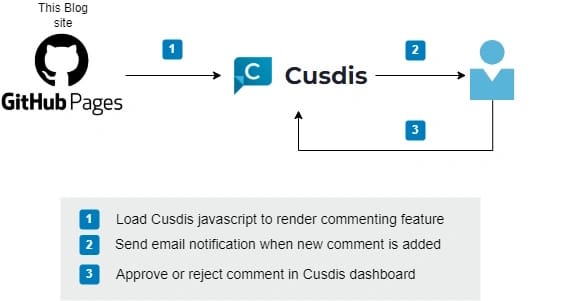
Updated comment approval flow
This newly updated flow relies on Webhook to deliver events about new comments. Azure Logic App receives and orchestrates the handling of new comments and moderates the content with Azure Content Moderator. Finally, comments with moderation results are persisted in table storage, and email notification is sent to the moderator.
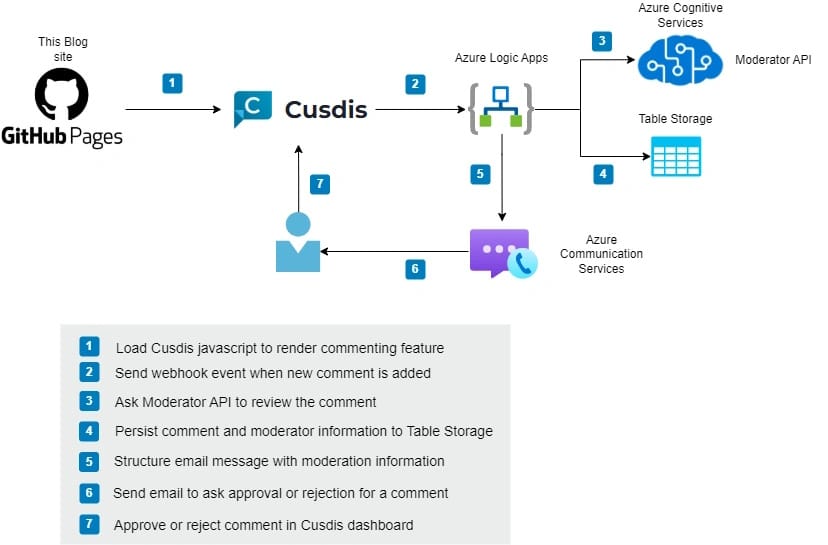
Required Azure infrastructure
Resource group
az group create --name rg-blog --location westeuropeAzure Content Moderator
Azure Content Moderator is responsible for providing review recommendations about the comment.
az cognitiveservices account create --name cog-comment-moderation --resource-group rg-blog --kind ContentModerator --sku S0 --location westeurope --yesStorage Account
Storage Account and especially Table Storage is used to persist all comments and review recommendation results provided by Azure Content Moderator.
az storage account create -n stblogcomments -g rg-blog -l westeurope --sku Standard_LRSAzure Communication Service
Azure Communication Service is used in this sample to send email notifications to a moderator.
Note! You need to create also Azure Email Communication Service which is currently in a preview mode (01/2023) and available only from the United States. Azure Communication Service must be located also in the United States and you can use it for email communication.
az communication create --name comm-email --location "Global" --data-location "United States" --resource-group rg-blogLogic Apps
Logic App provides the Webhook endpoint and orchestrates the handling of comments.
az logic workflow create --resource-group rg-blog --location westeurope --name "logic-comment-webhook" --definition "definition.json"Technical implementation
Logic App
Logic App orchestrates the comment approval flow from receiving an event, requesting content moderation from Azure Content Moderator, persisting the comment and results to Table Storage, and sending an email to the moderator.

Step 1: When an HTTP request is received
This action creates an HTTP POST endpoint which receives comment events from Cusdis. You can find new comment event schema documentation from here.
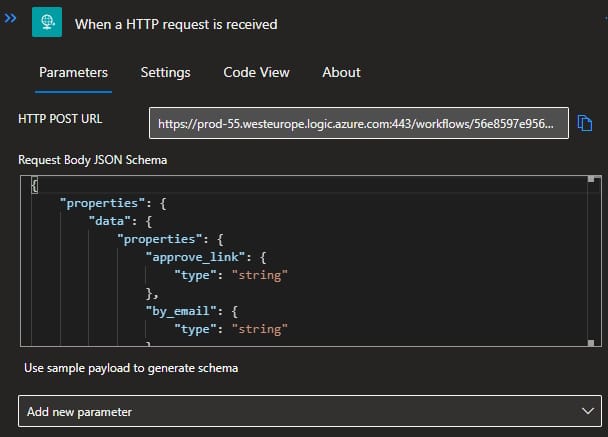
Step 2: Request moderation from Azure Content Moderator
Request moderation action detects offensive & profanity words and matches against custom and shared block lists.
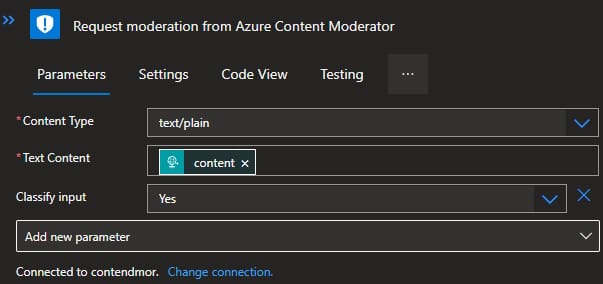
The output of this action (API call) is a JSON object which has classification in three categories. These categories are determined as follows according to Microsoft documentation:
Category 1Category 2 refers to the potential presence of language that may be considered sexually explicit or adult in certain situations.
Category 2Category 3 refers to the potential presence of language that may be considered sexually suggestive or mature in certain situations.
Category 3the refers to the potential presence of language that may be considered offensive in certain situations.
The category score is between 0 and 1. The higher the score, the higher the model is predicting that the category may be applicable. This feature relies on a statistical model rather than manually coded outcomes. Microsoft recommends testing with your own content to determine how each category aligns with your requirements.
ReviewRecommended is either true or false depending on the internal score thresholds.
{
"body": {
"OriginalText": "Thank you for sharing this. Very useful content.",
"NormalizedText": "Thank you sharing . useful content.",
"Misrepresentation": null,
"Classification": {
"ReviewRecommended": false,
"Category1": {
"Score": 0.057542379945516586
},
"Category2": {
"Score": 0.17334049940109253
},
"Category3": {
"Score": 0.04330739378929138
}
},
"Language": "eng",
"Terms": null,
"Status": {
"Code": 3000,
"Description": "OK",
"Exception": null
},
"TrackingId": "6c541d65-ccd6-4a0c-a157-cb6629323250"
}
}Step 3: Parse Content Moderation Result
This action creates user-friendly tokens from JavaScript Object Notation (JSON) object properties so you can easily use those properties in the workflow.
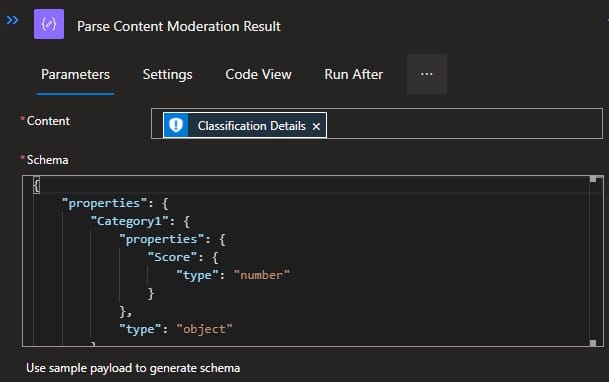
Step 4: Initialize Table Storage Entity
This action initializes the comment entity which has information from raw events and results of Azure Content Moderator.
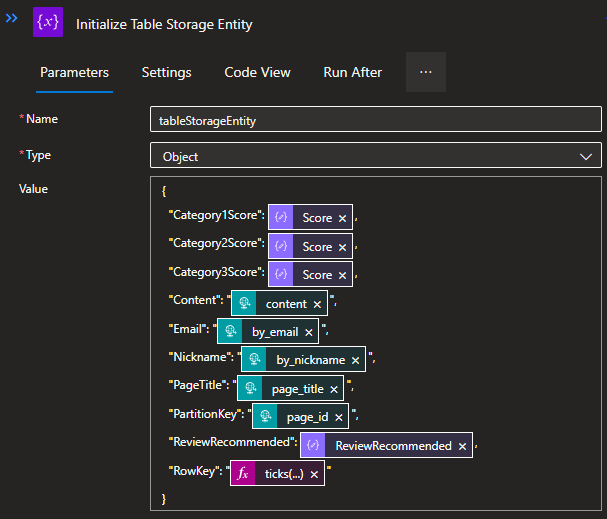
Step 5: Persists Data to Table Storage
Comment entity is persisted to the table storage via this action.
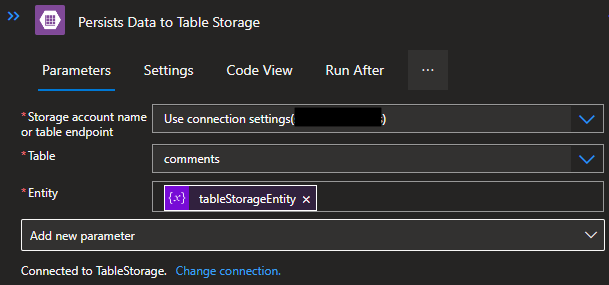
Step 6: Initialize Quickchart data
This action initializes a variable that contains a Quickchart JSON object as a string. Quickchart is used to generate a diagram based on Azure Content Moderator classification results. Later this chart is embedded in the notification email.
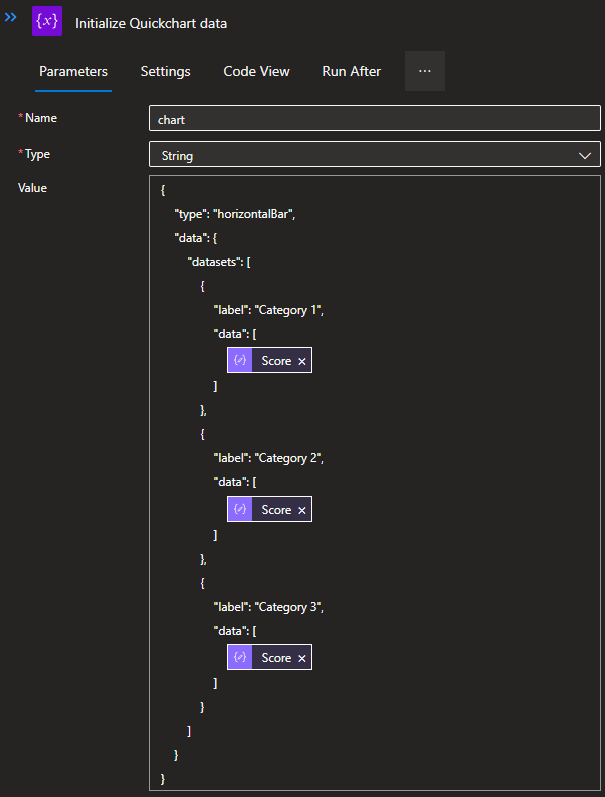
Step 7: Encode Quickchart content
This variable creates an HTML image tag which refers to Quickchart API service to generate chart images. Querystring parameter "C" contains Quickchart JSON object as a URI encoded format.
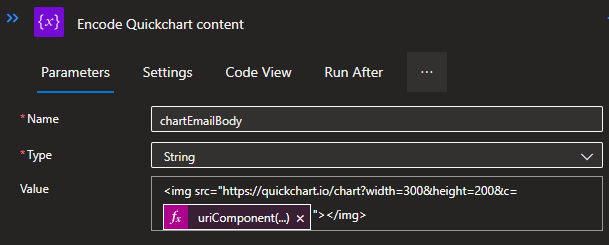
Step 8: Create Approval Link
As said earlier Cusdis Webhook event contains a link with an authentication token that enables comment approval without login. This variable creates an HTML link with that approval link.
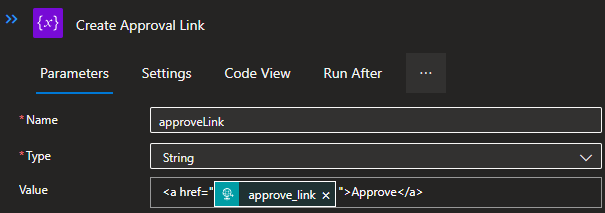
Step 9: Send notification email
This Send Email action of Azure Communication Service gathers all required information to the body of the email and delivers email notification to a moderator.
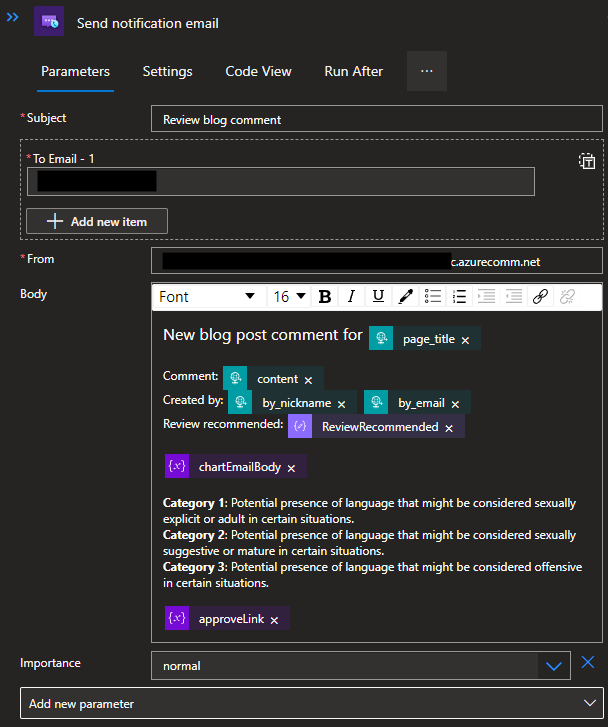
The final email notification looks like this. It contains an original comment, a review recommendation provided by Azure Content Moderator, and a chart provided by Quickchart about classification details of moderation.
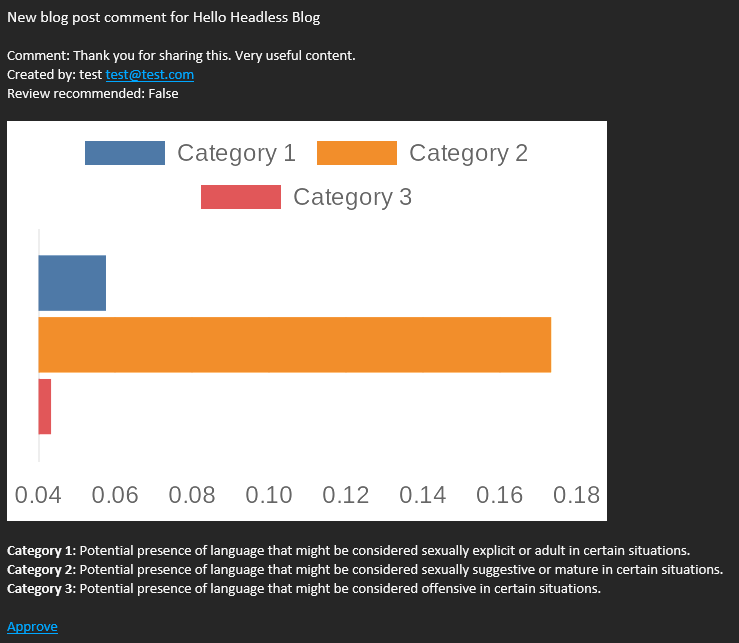
Summary
My initial plan was to test Azure Content Moderator API via Azure Functions but quickly I noticed that the same API capabilities are also available in Logic App with pre-built actions. Creating this orchestration of the approval flow was really easy and straightforward with Logic Apps. It was also interesting to investigate a bit about Azure Communication Service capabilities.
Hopefully, someday I can automate this so that moderator interaction is required only if Azure Content Moderator suggests manual review. Otherwise, the comment is approved automatically via API (which is not currently possible).
The Logic App definition file is available on GitHub.

Comments